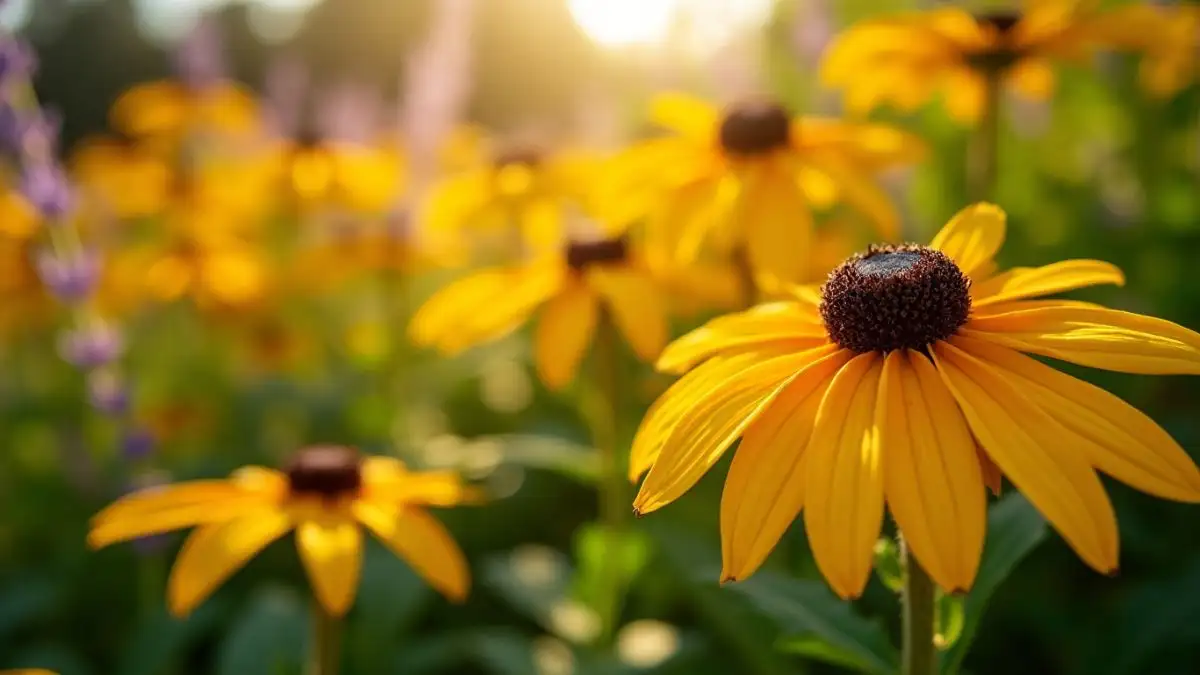Black Eyed Susan Plants: 7 Stunning Tips for Thriving Blooms
Few flowers brighten up a garden like the Black Eyed Susan plant. With their golden-yellow petals and contrasting dark centers, these iconic blooms are a true staple for gardeners of all levels. But how do you ensure your Black Eyed Susans not only survive but thrive, providing dazzling displays season after season?
This comprehensive guide will explore 7 stunning tips for ensuring your Black Eyed Susan plants flourish. We’ll also dive into key details, including propagation methods, popular varieties, seasonal care, and answers to frequently asked questions, offering unmatched value for both novice and seasoned gardeners.
Table of Contents
Why Black Eyed Susans Deserve a Spot in Your Garden
Black Eyed Susans are more than just beautiful flowers—they’re practical and versatile additions to your garden. Whether you’re creating a wildlife-friendly space, a cutting garden, or simply want vibrant, easy-to-grow blooms, these flowers have you covered.
Why Are They So Popular?
- Low Maintenance: They thrive with minimal effort, making them ideal for busy gardeners.
- Pollinator Friendly: Butterflies, bees, and birds love Black Eyed Susans, which means you’ll be supporting local ecosystems.
- Weather-Resistant: These hardy plants can withstand drought, heat, and even light frost.
Are Black Eyed Susans Perennials or Annuals?
This is one of the most commonly asked questions about Black Eyed Susans. The answer depends on the type you’re growing.
- Annuals: Some varieties, like Rudbeckia hirta, complete their life cycle in one year. These are perfect if you’re looking for quick bursts of color.
- Perennials: Others, like Rudbeckia fulgida, return year after year, making them an excellent choice for a long-term investment in your garden.
Example: In colder climates, perennial varieties such as Rudbeckia Goldsturm can handle frosty winters and bloom again in summer, while annuals like Indian Summer are great for fast, vibrant displays.
7 Stunning Tips for Thriving Black Eyed Susan Blooms
Now let’s dive into the seven essential tips for growing Black Eyed Susans that will keep your garden looking vibrant.
1. Choose the Right Variety for Your Needs
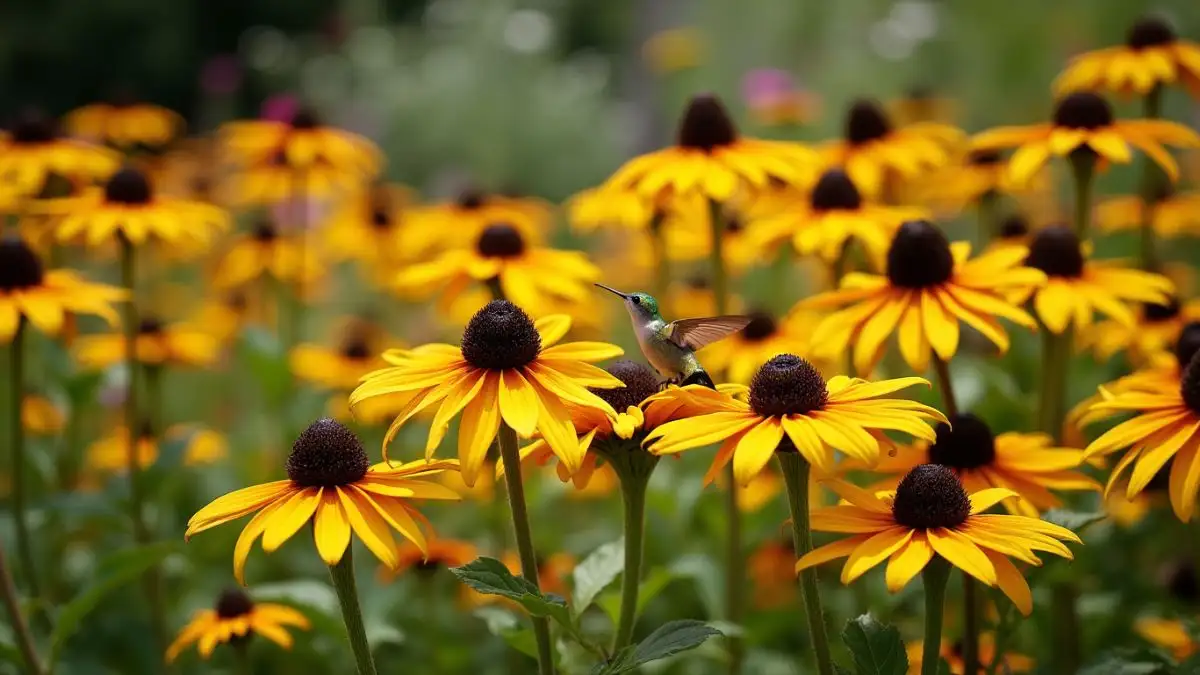
With so many Black Eyed Susan varieties to choose from, selecting the right one for your garden is crucial.
- For Wildflower Gardens: Opt for Rudbeckia triloba with its smaller flowers and bushy growth.
- For Tall Borders: Rudbeckia maxima stands tall and commands attention.
- For Fragrance: Rudbeckia subtomentosa, also known as sweet coneflower, offers a delightful scent.
Pro Tip: If you’re designing a pollinator garden, mix different varieties to create layers of blooms that attract bees, butterflies, and hummingbirds.
2. Plant in the Right Location
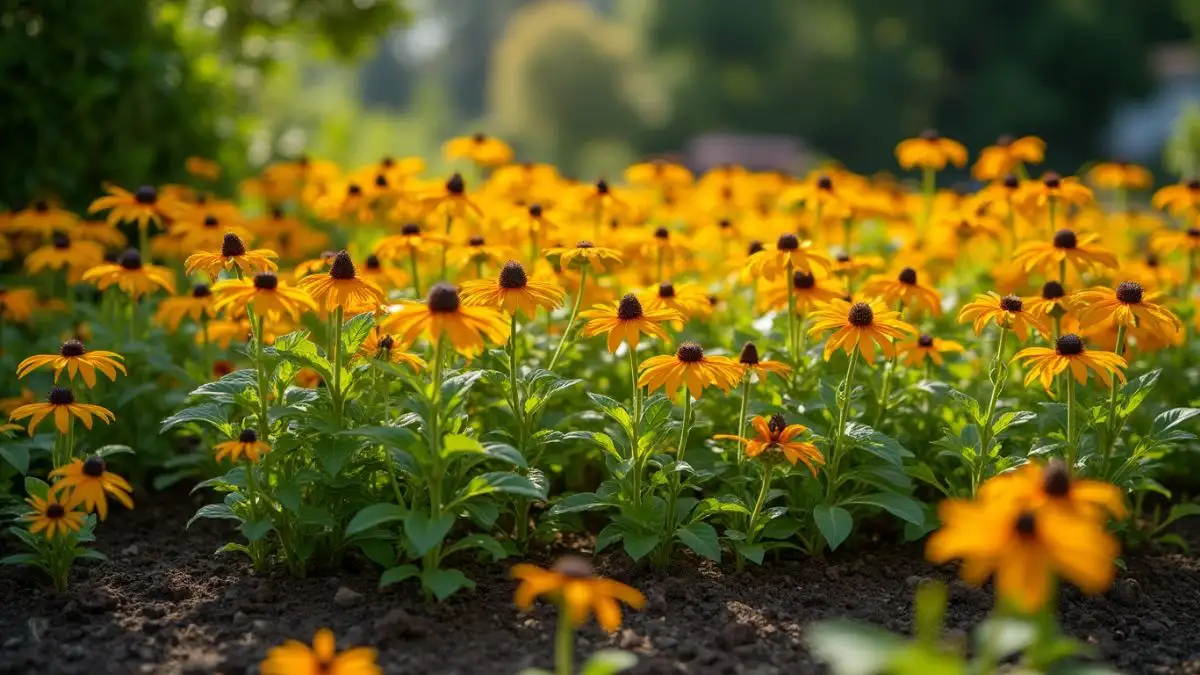
The Black Eyed Susan plant flourishes in full sun, requiring a minimum of 6–8 hours of direct sunlight each day.
- Example: In hotter climates like the southern U.S., plant them where they’ll receive morning sun and some afternoon shade to prevent wilting.
- Avoid planting in low-lying areas where water tends to pool, as overly wet soil can cause root rot.
3. Improve Your Soil for Better Growth

While these plants are adaptable, they perform best in well-draining, nutrient-rich soil with a pH between 6.0 and 7.5.
- Add organic compost before planting to improve soil fertility.
- Apply mulch around the base to conserve moisture and inhibit weed growth.
For example, if your soil is clay-heavy, incorporate sand or perlite to enhance drainage and prevent waterlogged roots.
4. Space Them Properly to Prevent Diseases
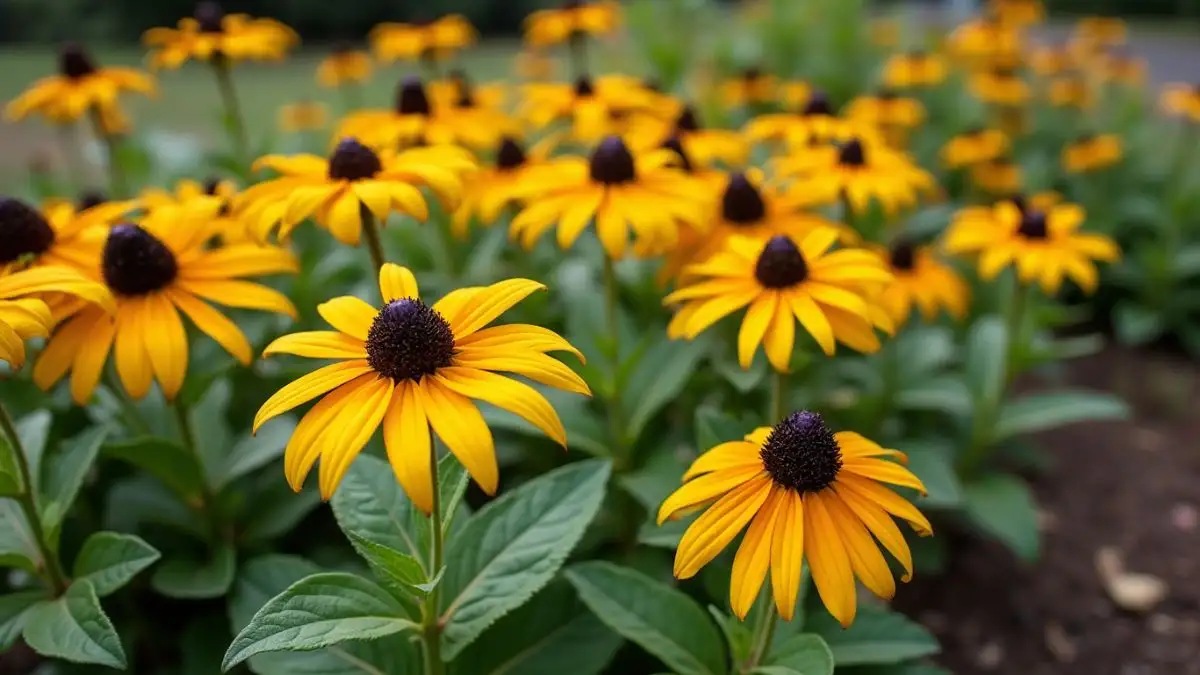
Overcrowding Black Eyed Susans can result in fungal issues, such as powdery mildew. Proper spacing ensures air circulation and healthier plants.
- Recommended Spacing: Plant 12–18 inches apart for most varieties.
- If you’re growing taller species like Rudbeckia maxima, leave up to 24 inches of space.
Pro Tip: Stagger your plants in a zigzag pattern for a fuller, natural-looking garden bed.
5. Water Wisely
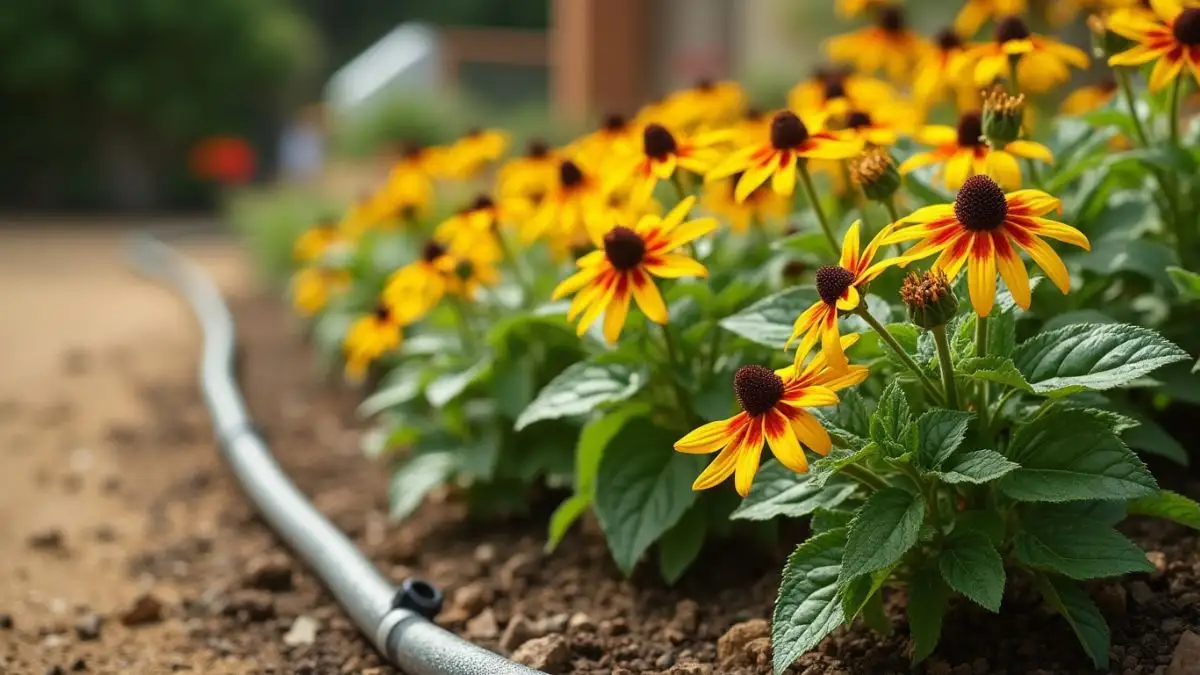
Once established, the Black Eyed Susan plant is drought-tolerant, but young plants need consistent watering.
- During dry periods, water deeply once a week.
- Refrain from overhead watering, as it can promote fungal growth.
Example: Use a soaker hose to direct water to the roots without wetting the leaves, reducing the risk of disease.
6. Deadhead for Continuous Blooms

Regular deadheading encourages the plant to produce more flowers instead of diverting energy to seed production.
- Pinch or cut spent blooms just above a healthy leaf set.
- Leave a few blooms in late summer for seed collection or to feed birds.
Pro Tip: In fall, allow some flowers to dry on the plant to reseed naturally for next season’s growth.
7. Stay Ahead of Pests and Diseases
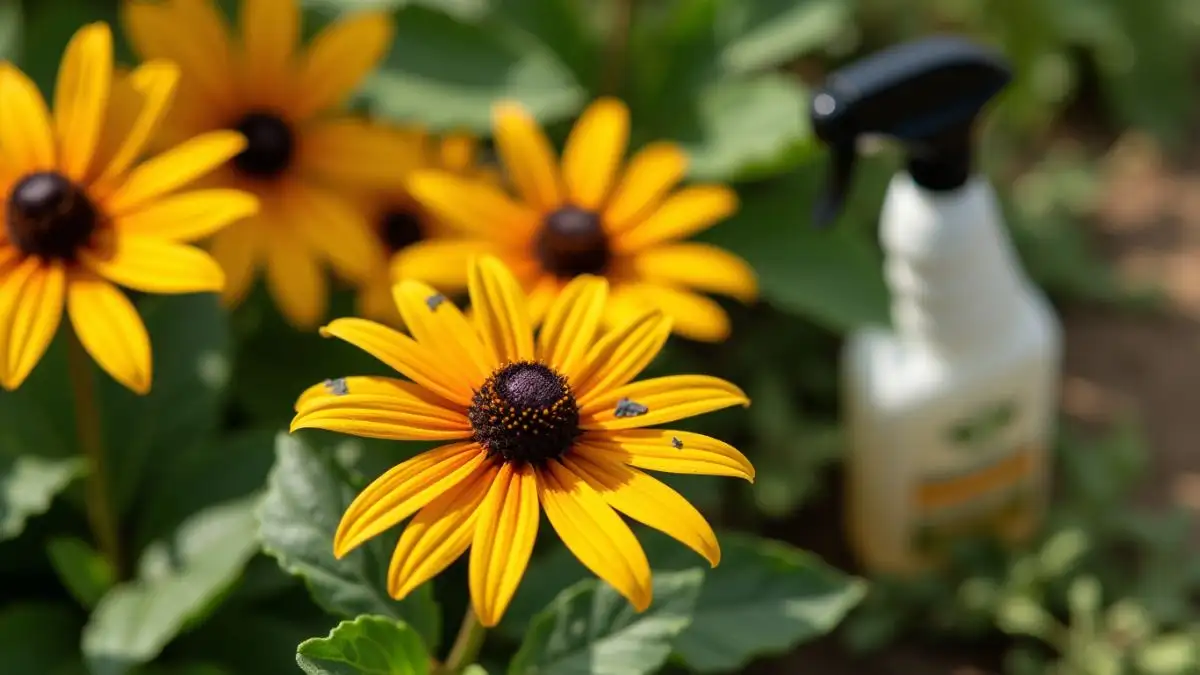
While Black Eyed Susans are hardy, they’re not immune to issues like aphids, spider mites, or fungal infections.
- Use neem oil to deter pests.
- Remove affected leaves immediately to prevent the disease from spreading.
For instance, if you spot powdery mildew, trim the affected leaves and create more space between plants to enhance airflow.
Beyond Care: Creative Ways to Use Black Eyed Susans
Black Eyed Susans are more than just garden staples—they’re incredibly versatile. Here are a few inventive ideas for using them:
- Create Pollinator Havens: Pair them with milkweed, bee balm, or lavender to attract butterflies and bees.
- Wildflower Displays: Combine with other wildflowers like coreopsis and purple coneflowers for a meadow-like effect.
- Bouquet Staples: Their sturdy stems and vibrant petals make them excellent for cut flower arrangements.
- Edging Gardens: Use compact varieties to line walkways or create borders.
Black Eyed Susan Propagation Methods
1. Propagating by Seed
- Harvest seeds from dried flower heads at the end of summer.
- Plant directly in garden soil during spring or start indoors for earlier flowering.
2. Dividing Established Plants
Every 3–4 years, dig up and divide the root clumps to prevent overcrowding and maintain vigor.
3. Propagating by Stem Cuttings
Take cuttings in spring and root them in a mix of perlite and potting soil.
Growing Black Eyed Susans: A Beginner’s Guide
Black Eyed Susans are perfect for beginner gardeners thanks to their resilience and low maintenance needs. Start with Rudbeckia hirta, a variety that thrives in sunny, well-drained soil.
Plant seeds or transplants, spacing them to allow proper airflow. Water during dry periods and remove spent blooms to maintain continuous flowering.
With their resilience and vibrant blooms, Black Eyed Susans are a perfect choice for first-time gardeners.
Black Eyed Susan Recipes for Your Kitchen
Get creative by using Black Eyed Susan petals in recipes. Make a unique herbal tea by drying petals and steeping them in hot water. Add chamomile or mint for extra flavor.
Petals also work as edible garnishes for salads and desserts, adding both color and a mild floral taste. Incorporating Black Eyed Susans into your kitchen creates a garden-to-table connection.
FAQs: Your Questions Answered
1. Are Black Eyed Susans easy to grow?
Yes, they are beginner-friendly and require minimal care once established.
2. Do Black Eyed Susans attract pollinators?
Absolutely! Bees, butterflies, and even hummingbirds are drawn to their vibrant blooms.
3. Are Black Eyed Susans perennials or annuals?
It depends on the variety; they can be either.
4. How do I prevent powdery mildew?
Ensure proper spacing, water at the base, and prune infected leaves promptly.
5. Can I grow Black Eyed Susans in containers?
Yes, just ensure the pot has good drainage and receives ample sunlight.
6. What’s the best soil for Black Eyed Susans?
Ideal conditions include well-draining soil with a pH between 6.0 and 7.5.
7. How often should I water them?
Water weekly, increasing frequency during dry periods.
8. Can Black Eyed Susans handle frost?
Perennial varieties can withstand light frost, while annuals need replanting.
9. Do I need to fertilize Black Eyed Susans?
A balanced, slow-release fertilizer applied in the spring is typically enough.
10. Can Black Eyed Susans spread?
Yes, they can reseed and spread naturally, but division controls their growth.
Conclusion
With their bold, sunny blooms and minimal maintenance needs, the Black Eyed Susan plant is a fantastic addition to any garden. By following the tips and techniques in this guide, you can ensure your plants thrive, delighting you with vibrant displays year after year.
Start planting today and create a garden that’s not only visually stunning but also a haven for pollinators and wildlife!


